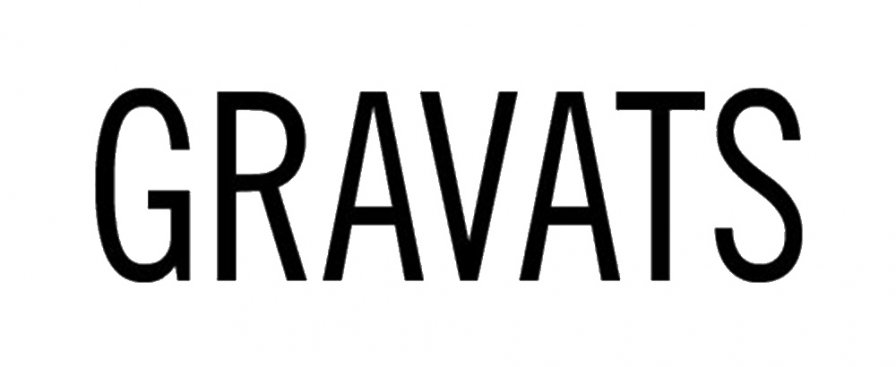We celebrate the end of the year the only way we know how: through lists, essays, and mixes. Join us as we explore the music that helped define the year. More from this series
Editions Gravats

Editions Gravats is French. It began late 2014 with a 12-inch and a cassette. Last year, the label hijacked my radar with its ONLY 2015 release, Mane, Thecel, Phares by Black Zone Myth Chant (a.k.a. High Wolf). As I love a good mystery — especially with short-lived labels dropping excellence — Editions Gravats didn’t reemerge until February this year for more Black Zone Myth Chant, including a CD mixed by Low Jack. In March, I gripped a copy of 100% PRROMO! by DJ David Coquelin from Boomkat because of the intriguingly minimal/maximum cassette “art” and sales verbiage. HATED IT! After I gripped JE M’EN TAPE by DJ Coquelin ft. MC Cloarec — released by sister label, PRR! PRR! — and listened to it back-to-back with 100% PRROMO!, I finally recognized the comedy/horror of what Editions Gravats was narrating in the music community. Nothing shared on Twitter. No promotional nonsense. Not really sharing most of their music on SoundCloud or Bandcamp. Nonchalant in the most ultra way. Then came Clara!’s tape Reggaetoneras 2 (a follow-up to…) and Nique La Musique De France by Carval Tarek, featuring the same sort of break-style, transitionally mastered, poker-faced satire on gabber, noise, techno, dancehall, [FRENCH], advertisement, rave, etc. Heavy focus on etc. And if that’s not enough for you, they’ve a slew of NTS and RINSE mixes!
Hausu Mountain

Hausu Mountain has now been around long enough for it to be reliable: the instantly recognizable acid-baked 16-bit cover art; the prolific, manic electronic experiments; an aesthetic somewhere between sincere gearhead jams and high-concept internet trolling that has helped to define the somewhat insular world of present-day alt tape labels. But Hausu has always built its identity on surprises, and in 2016, these freaks from Chicago have surprised us once again by deepening their sound with some of the richest, most nuanced music in their already excellent catalog. Following 2015’s watershed moment of giving the world two already classic Eartheater albums, the label has held onto its signature hacked-MIDI style while reaching past it with records by ROM, Radiator Greys, and their ilk, pointing to deeper instrumental complexity while assuring us that Hausu is focused on deleting your brain and replacing it with some kind of damaged Giphy interzone (perhaps best represented by the profoundly disorienting In Dual Mono from Headboggle). Ending the year on a big high note, Hausu dropped solo tapes from the three members of flagship band Good Willsmith; easily among the best albums they have released to date, these diverse records (by ex-TMTer Mukqs, MrDougDoug, and TALsounds) served as both a summing-up and a mission statement of a (hopefully) still-young label, spanning both its most reflective and its most piss-taking moments. Keep evolving, Hausu Mountain, but also never change.
Memory No. 36 Recordings

One of 2016’s steadiest streams of outer-reaching experimentation came from Memory No. 36 Recordings, a digital-only (well, mostly digital: all six of their tapes are on sale for $2.50 a piece) label that somehow amassed over 40 releases, nearly doubling its catalog size (a feat that would make Illuminated Paths blush). The greatest part is that established artists are in the minority. Since founding the label in 2012, Ricardo Stacey has grown from the ground, organically. He has the uncanny ability to bring rad, quality first-time collaborations and projects into the light, like Keidian Syme & Buga, Ethrelite, Maxwell Sterling (see below), honestly too many to list here. Bands like Orca Life, Pregnant, and Five Star Hotel (also see below) all went through Stacey this year, and there’s no doubt it helped the label spread. But the groundwork is in the opportunities Memory No. 36 gives new projects. And for that, we thank you.
Northern Electronics

Abdulla Rashim’s Northern Electronics already has a reputation for wintry techno. Before this year, I’d already experienced Varg’s live set, a blown, thunderous, and boundary-defying conversation between functional house and lo-fi ambient that ventures far from the narrow passages charted in most of his recorded work. This year, his ჟინვალი (NE32) hinted through layers of obscurity at synth melodies, guitars, and sheets of noise, bringing them all to wash over one another like waves and, as if pressing into sand, continued softly in his special work of carving out passages. On the less reverb-soaked side, Ulwhednar’s Om Syndernas Förlåtelse (NE27) used repetitive synth lines, muddled recordings, and the sibilance of tape distortion to create meaningful drama within the limited confines of a small range of frequencies, carrying its hiss with pride and a kind of self-awareness. Förensligandet by D.Å.R.F.D.H.S. (NE28) was a sort of monolithic companion to a couple long, late bike rides; even though it’s only 67 minutes long, it’s wretched and inhabitable and makes those minutes feel like forever. The most song-oriented of all the label’s releases this year, Förensligandet, mixes dub techno long-jammers, like DJ tools for maladjusted loners, with atmospheric synth pieces and the occasional few-minute stretch of feedback. Coming together on compilation Scandinavian Swords II (NE30), Rashim, Varg, the icy and prolific Acronym, and others like Fatal and Korridor display their bold similarities and differences, making a case for their austere aesthetic program. That compilation is a good place to start on a label that I think has been great for a few years, but which had a particularly great 2016 and is well-positioned to broaden its audience.
Phinery

The concept of vastness, as an epistemological tool, contains within itself a curious tension. It is the name we use for those things whose scale surpasses the economy of our imagination to meaningfully engage with it. We characterize something by our inability to adequately characterize it. In 2016, no other label brought us into such near consideration of vastness than Denmark’s Phinery. The austerity of their approach — blank in white and curatorial embellishment conspicuously absent — performs the re-/de-contextualizing work of the gallery space and demands we furnish it ourselves. Space becomes vast in its union of abundance and absence — Öd’ und leer das Meer. Sound becomes vast in its insistence on conquering space. Along that line, much of Phinery’s output this year subverted the sublimity of insignificance and rendered vastness in a sculptural manner. Creating and molding shifting and bounded universes from the dura materia of empty air, an apollonian air of playfulness seizes academic compositions, ambient arcologies, and all environs intervening. The diversity of method — ambient, glitch, drone, collage, techno, New Age over two dozen releases — only serves to underscore the unity of concept. Frigid and friable, volcanic and volute, the sounds curated within Phinery’s menagerie stretch and abstract in strange, frustrating, and alienating ways. The slow expressionistic guitar of øjeRum’s Sne builds to bucolic hissing caries; Mukqs (ex-TMTer) and DJWWWW ravage the world with their kaleidoscopic cyclones of samples; and Chaise almost sounds like a bunch of songs with its collection of noise-inf(l)ected melodies. Structural and textural, Phinery’s sound has sketched massive worlds of endlessly propagating ambient washes and granular miniatures of interlocking synthesized chirps. Somewhere between the somnambulant serenity of Inner Travels and the searing pointillism of Redundancy Studies, it’s plain to see that Phinery, as devoted to adventurous electronics as ever, delivered a year of unmatched breadth and depth.
We celebrate the end of the year the only way we know how: through lists, essays, and mixes. Join us as we explore the music that helped define the year. More from this series
